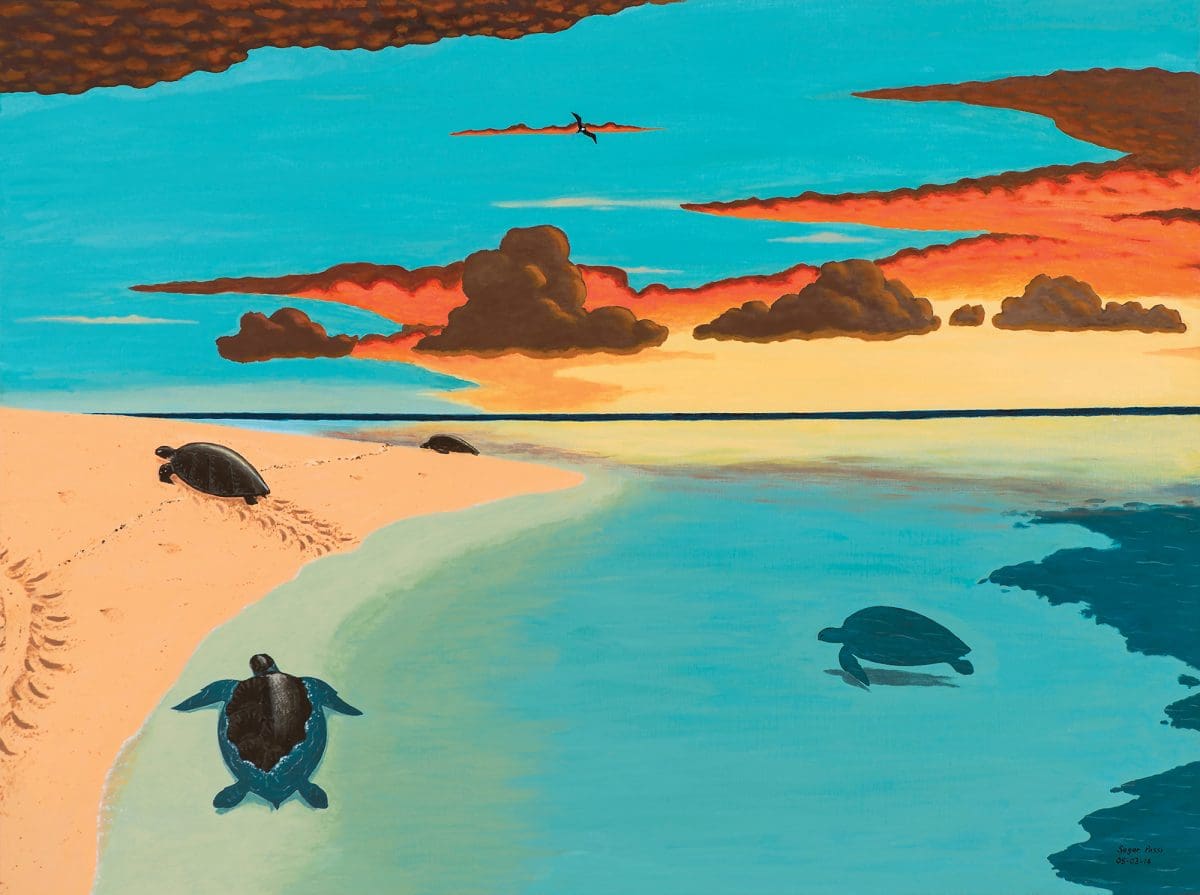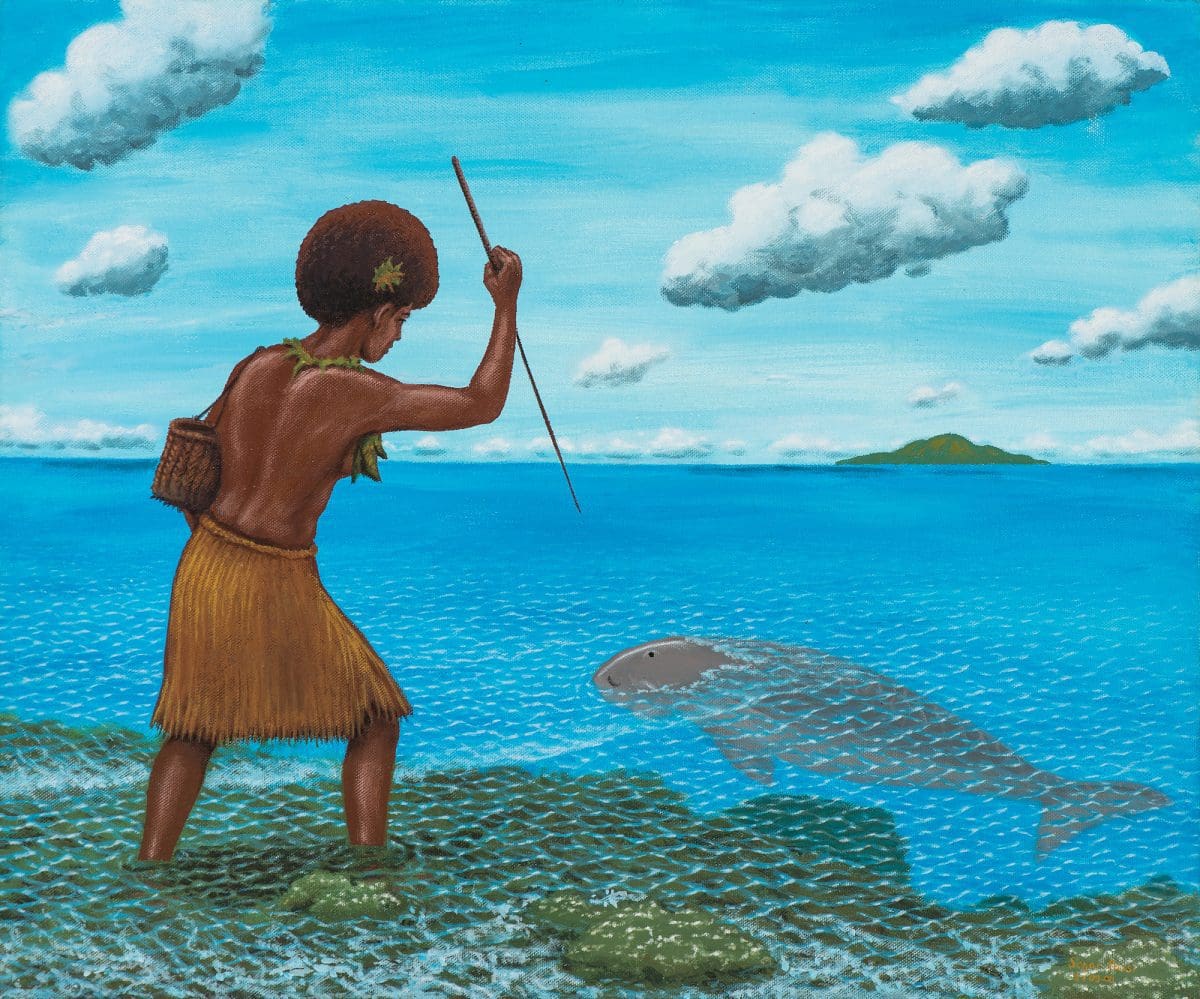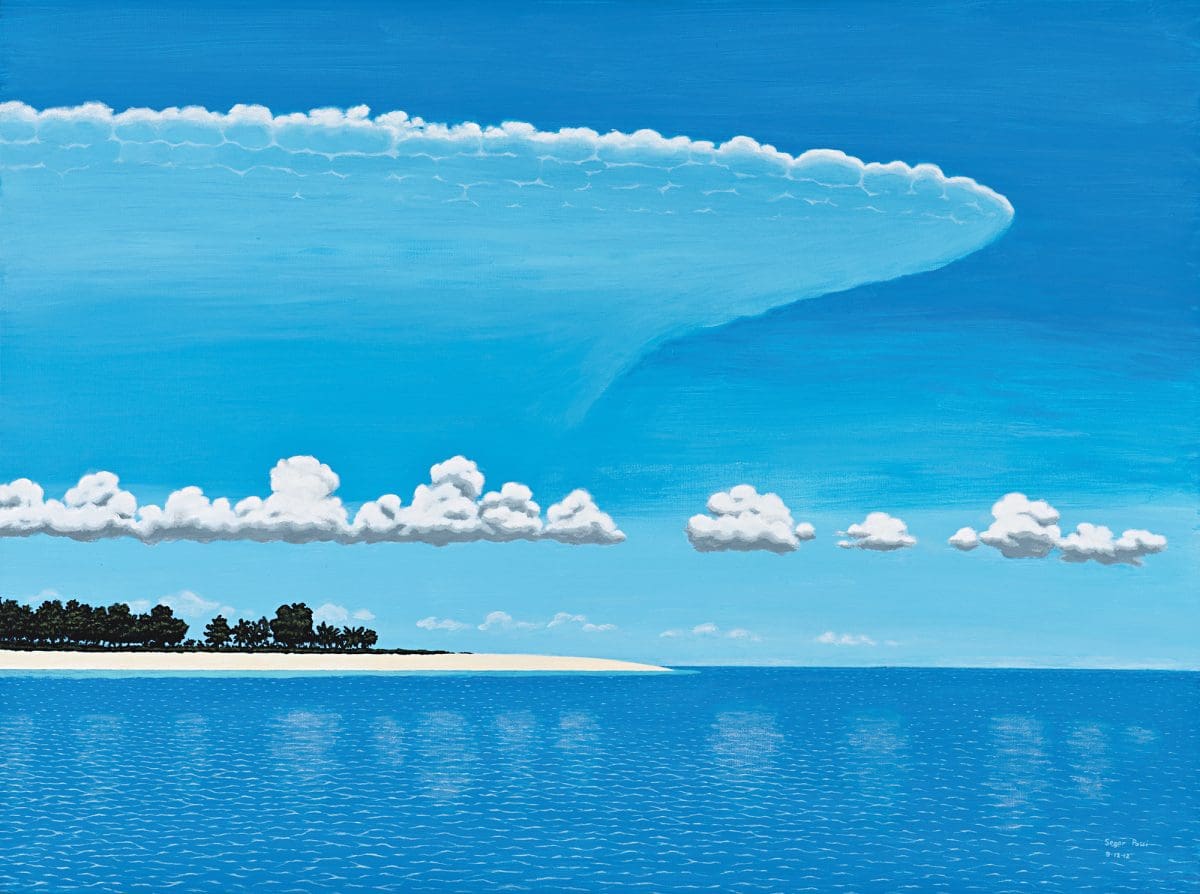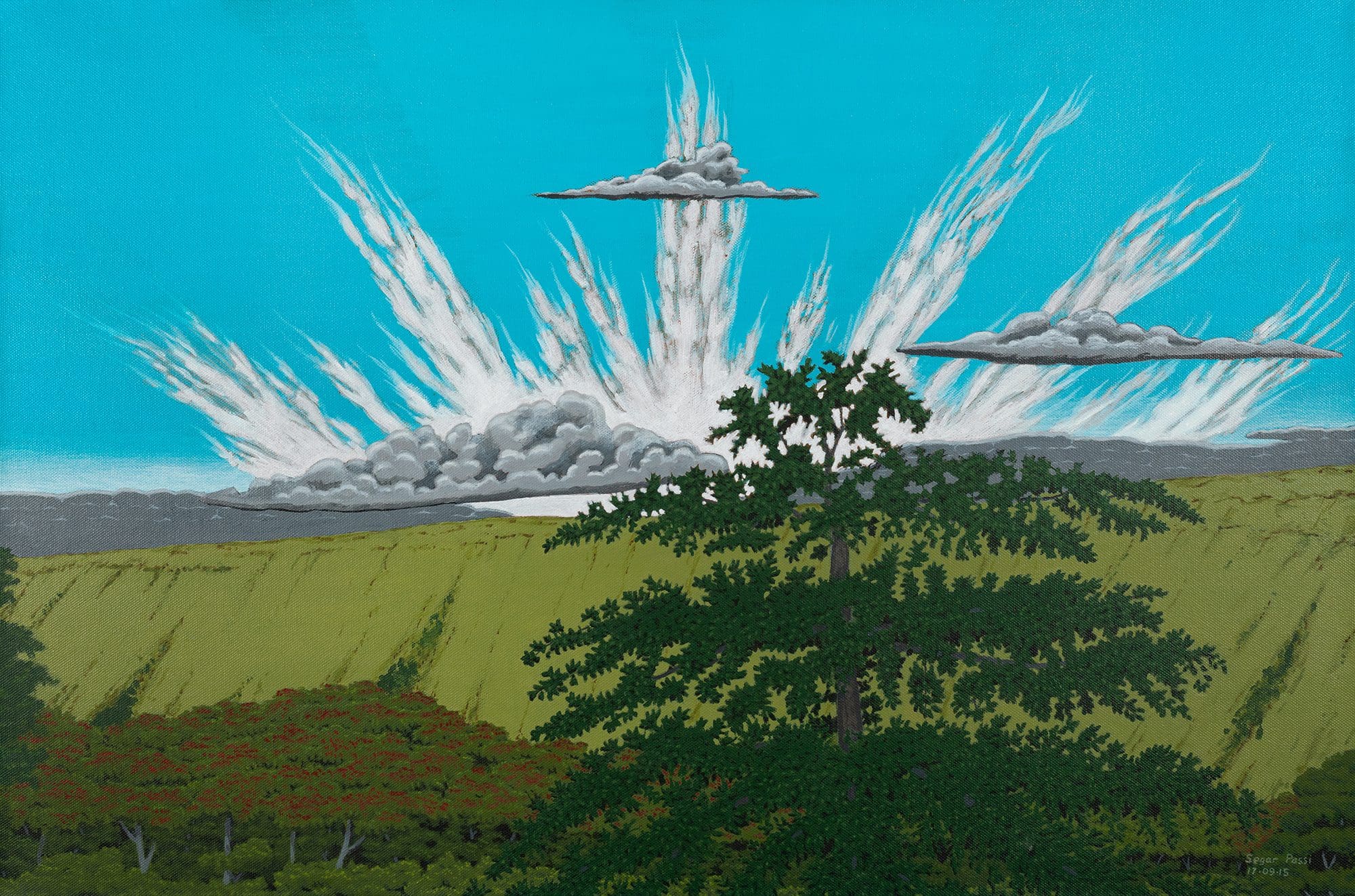
Piercing the veil
A new exhibition at Buxton Contemporary finds a rich complexity in the shadowy terrain between life and death.

Segar Passi, Turtles, 2014, synthetic polymer paint on canvas, Gift of the Blair family in memory of Heather Blair, 2014.

Segar Passi, Gelam and Atwer, 2008, acrylic on masonite, Collection: Kenny Bedford.

Segar Passi, Mam Edge, 2012, synthetic polymer paint on canvas, 76 x 100 cm. Purchased by Cairns Regional Gallery, 2012.

Segar Passi, Stima kor kor, 2012, synthetic polymer paint on canvas, 76.0 x 100.0 cm. Purchased by Cairns Regional Gallery, 2012. Photo: Michael Marzik.
For self-taught Torres Strait Islands artist Segar Passi, painting the luxuriously colourful scenery around him is not only about creating something beautiful, it’s also an important component of cultural legacy. Everything in his detailed paintings is implicitly intended to be a record of knowledge for future generations.
Passi’s extraordinary powers of recall are used to make his works, rather than working en plein air or using photographs as a reference. As Cairns Art Gallery director Andrea May Churcher observes in the catalogue for Passi’s show at the gallery, Passi’s ability to paint from memory is remarkable, “recalling details with absolute accuracy based on acute observational skills”. His paintings are also entrancingly rich in colour. Visitors to this retrospective, spanning Passi’s long career beginning in the 1960s, may find themselves instantly seduced by the way his bright palette saturates the senses.
A Mer (Murray) Island man, Passi commands great respect and affection at home and abroad for both his extraordinary output and for his very particular methods. The gallery’s assistant curator, Peggy Kasabad Lane, a Torres Strait Islands woman, says that like many Islands people she grew up knowing about Passi’s work. Respected anthropologist Margaret Lawrie had brought Passi’s art and his intricate cultural knowledge to attention when she wrote Myths and Legends of the Torres Strait in 1972—a book that Lane grew up reading.
“I’ve known about him for most of my life,” Lane says. “So, when I started curating this exhibition, I realised how much of his work is instructive and very much about passing on knowledge. Even in a work that you think is just a nice painting, he is still trying to pass on important cultural information.”
She cites the celebrated 2019 work Mer, held in the National Gallery of Victoria’s collection, which shows a stunning beach with clear waters and an island in the near distance—but on the sand are newly hatched turtles making their way to the water, their tracks imprinted behind them. The knowledge here is in the precisely recorded details of the track patterns, the time of year (indicated by the distinct cloud formations) and the detail in the turtle images.

“It feels like everything he has painted is there to pass on information,” Lane says. “As a Merim Mer [language group] man, that’s what our Elders do. My grandparents were the same—any opportunity to transfer that knowledge to the young ones in whatever way, whether it is sitting down weaving or an oral activity, they do it.”
Included in the show are some of Passi’s early works from the 1960s, such as Torres Strait Pigeon eating the fruit of the Wild Plum, 1968, in which the bird, also known as the Deumer, is heavily symbolic— according to legend, once you eat the Wongai tree’s fruit, you will always return to the Torres Strait Islands.
“He did another painting of a Deumer in a tree in 2004—it is incredible, because the two paintings are 40 years apart and there is no doubt it is the same artist. But they also both have the same attention to detail and are both done entirely from memory. He has an open-air studio on Mer next to his house and he is literally sitting there and painting from what he remembers . . .”
Lane has divided the show thematically, emphasising Passi’s interests in weather systems, cultural practices, mythology, Indigenous astrology, marine and bird life, and the day-to-day happenings he sees on the Islands. His interest in cosmology and representing First Nations understandings of the stars earned him, in 2020, the rare honour of having an asteroid named after him by the International Astronomical Union: 7733 Segarpassi is in the main asteroid belt between Mars and Jupiter.
As with his cosmological representations, Passi is very specific with his cloud formations—particular cloud shapes indicate certain weather patterns, time of year, and other important information related to food gathering. “This is the thing,” Lane says. “You have to be specific and the information has to be correct, so that the young ones can pass it on to the next generation. You are taught what this cloud means, what this wind means. Young teenagers have gone out and got lost at sea because they didn’t see the weather patterns properly and look to the sky, the clouds. Torres Strait Islands people are naturally visual people.”
Passi, now 80, recently put his brushes aside to settle into retirement. “It is important to say he has stopped painting,” Lane says. “We can reflect on his career—and he can stop getting requests to make new work. This exhibition ties all that in well: as a celebration of a lifetime of work and the most comprehensive exhibition put on for him.”
Meriba Ged A Gur (Our Land and Sea)
Segar Passi
Cairns Art Gallery (Cairns QLD)
8 October—11 December
This article was originally published in the November/December 2022 print edition of Art Guide Australia.